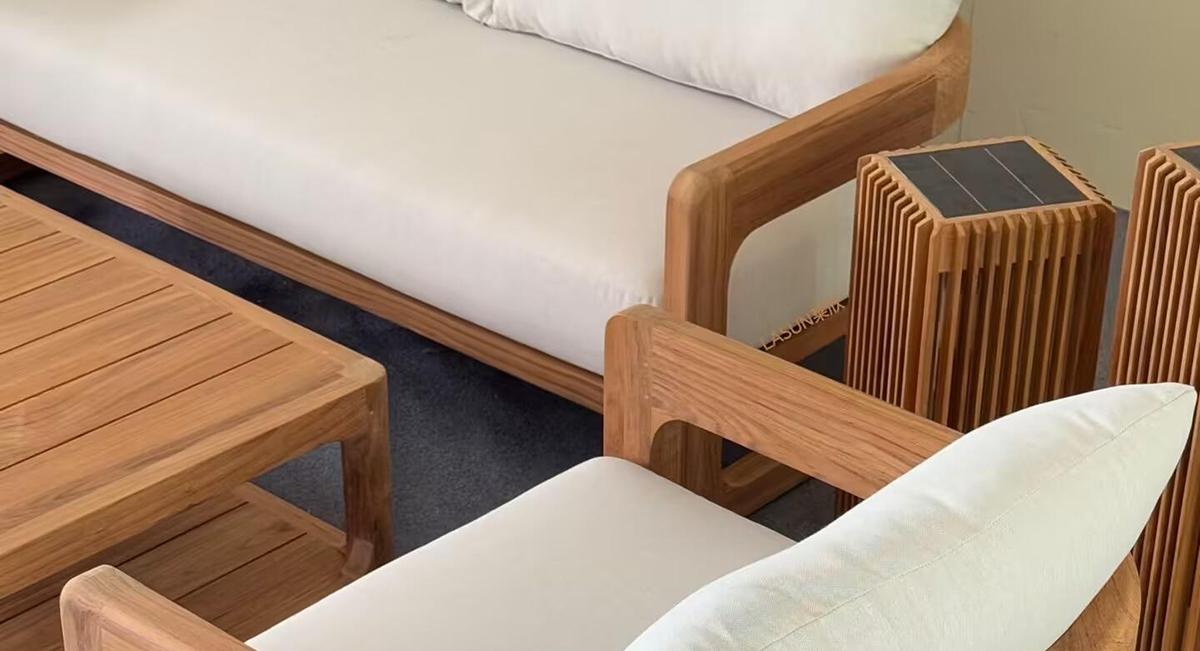When the newly bought sofa was moved into the living room, a pungent smell filled the air. After opening the window for ventilation for two weeks, the smell still lingered. After testing, the culprit was the formaldehyde released by the sofa material - this scene is being played out in countless families, and it has also prompted more and more people to turn their attention to truly environmentally friendly furniture.

Ⅰ. What is truly environmentally friendly furniture
Today, as the wave of green consumption sweeps the world, environmentally friendly furniture has moved from marginal choices to the mainstream market. This type of product is designed to create a sustainable environment for homes and offices, covering all categories from soft furniture such as sofa covers to hard furniture such as sofa frames.
Unlike traditional furniture, the core of environmentally friendly furniture lies in its sustainability throughout its life cycle. They are made of recyclable materials such as recycled wood, metal or plastic, and even fabrics converted from recycled beverage bottles. More importantly, water-based adhesives and non-toxic dyes are used in the production process to completely eliminate the release of formaldehyde and volatile organic compounds (VOCs).
International certification systems provide clear guidance for consumers: FSC certification ensures that wood comes from sustainably managed forests; GOTS standards regulate organic textiles; Oeko-tex 100 certification ensures that materials are harmless to human health. These labels have become reliable road signs for green consumption.
Ⅱ. Teak's environmental gene decoding
Among many environmentally friendly woods, teak (Tectona grandis) stands out for its unique biological characteristics. This tropical hardwood native to Southeast Asia has a density of 700-900kg/m³ and is strong enough to withstand huge pressure without deformation.
The environmentally friendly characteristics of teak come from three natural advantages:
1. Natural protective barrier: rich in special oils and compounds, it provides excellent anti-insect and anti-corrosion capabilities, and can resist insect pests without chemical treatment
2. Moisture regulator: The unique cell structure makes it stable in a humid environment, not easy to rot and deteriorate, and its service life far exceeds that of ordinary wood
3. Air purifier: The natural grapefruit fragrance it emits can purify indoor air. Studies have shown that its fragrance ingredients help relieve tension
The most amazing thing is the "more beautiful with use" characteristic of teak - over time, the surface is oxidized by photosynthesis and gradually presents a charming golden color, just like aged wine, which is timeless.
Ⅲ. Market fog and the art of distinguishing the truth
Although teak furniture has significant advantages, there are mixed fish and dragons in the market. At present, all-teak furniture is quite rare. Most products only use teak frames or teak veneers. Some merchants even use similar woods such as big beautiful wood beans and black heart magnolia to mix pearls.
Consumers can identify teak through the "four-step authentication method":
1. Check the ink line: real teak has unique straight ink lines, and the more densely distributed, the richer the oil quality
2. Test water beads: the surface is obviously beaded after water is sprinkled on it, rather than permeated
3. Smell the odor: it emits a unique natural sour fragrance, similar to the smell of slightly rotten rice
4. Observe the color: high-grade teak has a golden luster, while low-grade teak is dull
When purchasing, you must look for the "all teak solid wood furniture" logo and be wary of the word game of "teak all solid wood furniture" - the latter may only use teak in part.
IV. The wave of green consumption is coming
With the awakening of environmental awareness, the global ecological furniture market is booming. At the end of 2023, the online brand Cecer.com launched a dedicated environmentally friendly furniture shopping platform and set the largest discount event in the brand's history. The 12%-15% discount attracted a large number of urban consumers.
The high-end market presents a new trend of "sustainable luxury". Brands such as Ecobalanza use FSC-certified teak and organic latex foam to ensure the environmental friendliness of the product while maintaining comfort and aesthetic value.
Experts recommend incorporating environmentally friendly furniture into the circular economy system: consider donating or refurbishing old furniture before purchasing; choose durable products; and ensure that the materials are recyclable after the life cycle ends. A high-quality teak chair is likely to accompany two generations and witness the passage of time.
Conclusion
In the showroom of New York designer Emma Richardson, a set of teak tables and chairs from 1950 still shines with warm golden light. After 75 years of baptism, its texture has become clearer and its luster has become more mellow. "This is not furniture, it is the amber of time," Emma said, stroking the tabletop. As global forests disappear at a rate of 27 football fields per minute, choosing truly sustainable wood may be the most precious gift we leave for the future.
